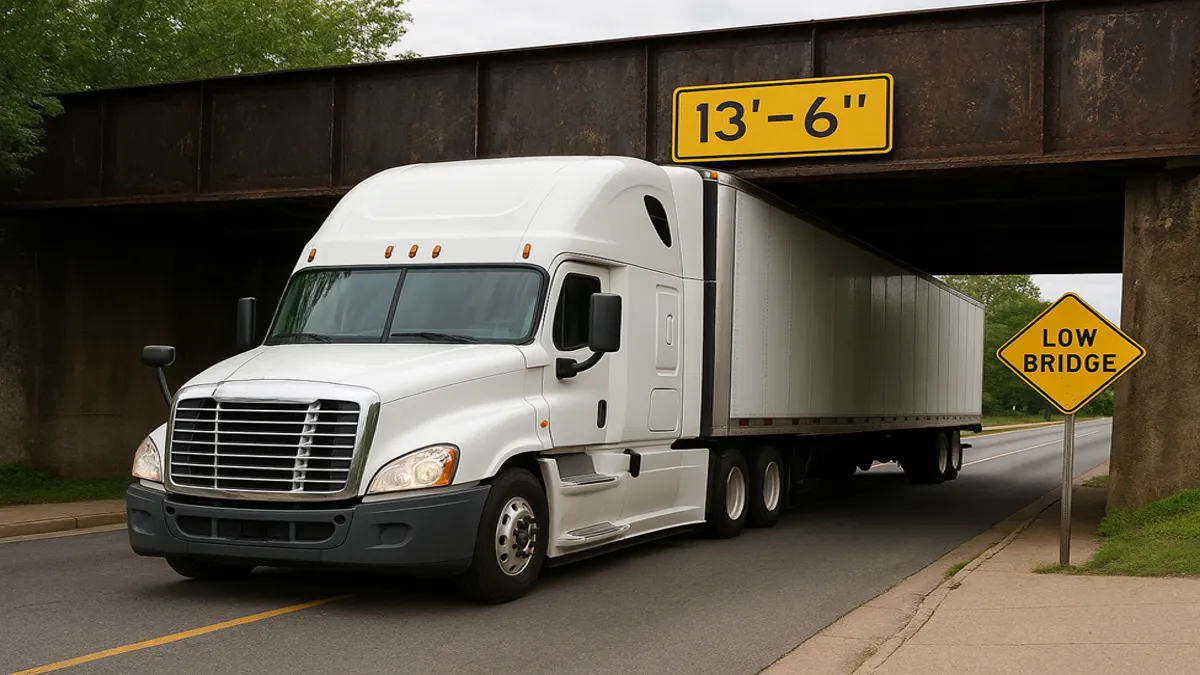Trucking is full of hidden challenges, and two of the most common yet overlooked are DOT scales and bridge clearances.
Even experienced drivers can get caught off guard. A long wait at a busy DOT scale or hitting a low bridge can throw off your schedule, add stress, and even lead to fines.
Paying attention to these details and planning can make the difference between a frustrating trip and a smooth, worry-free drive.
Understanding DOT Scales
DOT scales are official checkpoints that monitor truck weight and compliance with federal and state regulations. Overweight trucks can lead to fines, vehicle damage, and safety hazards on the road. The challenge is not just passing the scale. It is all about planning around them. Traffic jams, unexpected closures, or long wait times on a scale can add hours to a trip if not considered in advance.
Drivers should factor scale locations into their route planning and plan potential stops ahead of time to avoid unexpected delays. Being aware of seasonal variations, such as holiday traffic or peak delivery periods, can further improve trip efficiency.
Low bridges present another set of risks. Heights vary across regions, and temporary construction or maintenance can reduce clearance without warning. Striking a bridge is dangerous and can cause costly repairs, cargo loss, or delays that affect schedules.
For truckers, having accurate, up-to-date bridge clearance map information is essential. Some apps provide alerts for bridges that frequently cause incidents, helping drivers plan alternative routes.
Considering bridge clearances alongside cargo type is also important since taller or irregular loads require more careful navigation.
Combining knowledge of both DOT scales near me and bridge clearance can prevent these challenges. Efficient planning allows drivers to avoid unnecessary stops, anticipate weight restrictions, and navigate safely under low bridges.
Technology has made this easier. Modern navigation apps integrate both types of information, offering alerts for scale wait times, temporary bridge height changes, and alternative routes.
Many online platforms also allow drivers to record frequently traveled routes, note recurring obstacles, and share insights with others, improving operational efficiency for entire fleets.
Practical Actions to Stay Ahead
Before hitting the road, taking a few proactive steps can make a big difference. Being prepared with the right information helps you avoid surprises and keep your trip on track. Some key actions to focus on include:
- Keep truck height and weight details readily accessible.
- Check DOT scale locations and potential wait times before starting a trip.
- Confirm bridge clearances along planned routes, including temporary construction adjustments.
- Update navigation tools with real-time data to avoid unexpected detours.
- Share key route information with other truckers or fleet managers to improve efficiency.
Planning Makes All the Difference
By staying on top of both DOT scales and bridge clearances, drivers can cut down on delays, avoid unexpected fines, and keep their trips safer overall. Knowing where common problem areas are, using navigation tools that provide real-time updates, and keeping track of frequently traveled routes can turn what might feel like a stressful journey into a much more predictable and manageable one.
Planning gives drivers the confidence to focus on the road, make better decisions, and react calmly if something unexpected happens. Keeping logs of past trips, noting recurring low-clearance bridges, and sharing insights with colleagues or fleet managers also helps make future trips smoother for everyone.
In the end, a little preparation goes a long way toward reducing stress, protecting cargo, and keeping schedules on track.

